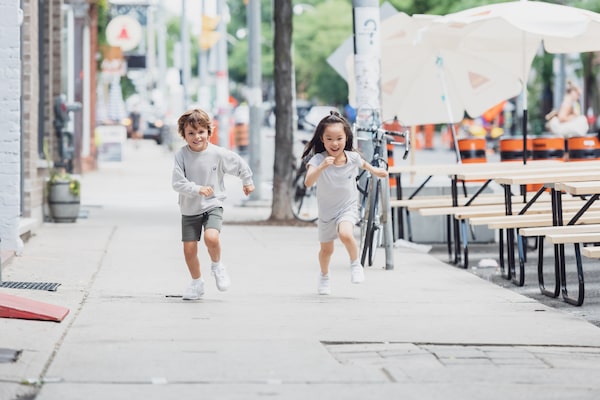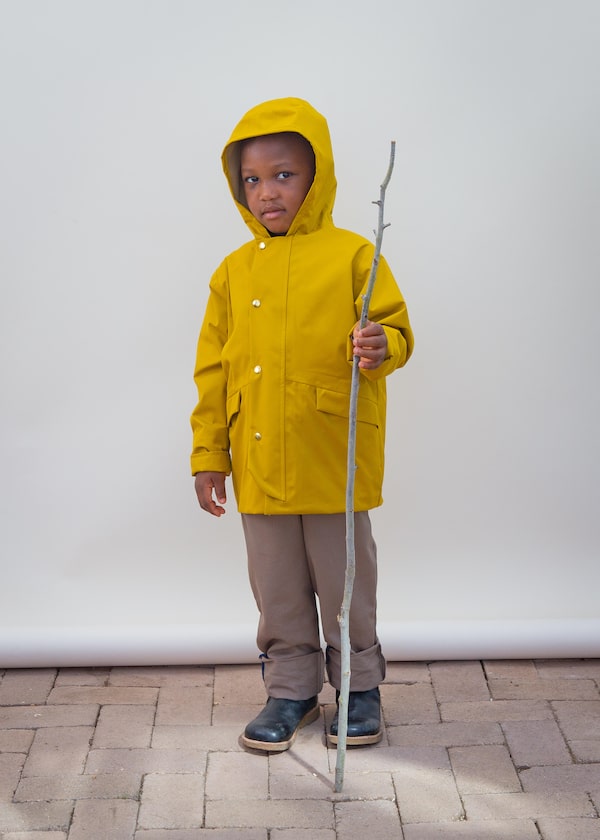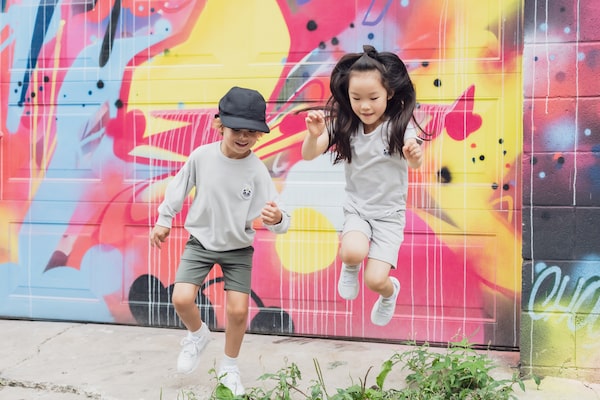Vancouver-based brand Petits Vilains produces sustainable, locally manufactured clothing with an heirloom quality.Handout
Two years ago, when her daughter turned one, Margherita Porra decided to live a more sustainable lifestyle, eliminating all plastics and synthetic materials from her household. As a cancer survivor, she became extra cognizant of the toxic nature of synthetic materials.
A part of her new mantra included dressing the entire family in eco-conscious fashion, including her infant daughter. That meant accumulating fewer items and buying from independent brands that adhere to ethical manufacturing standards. Now, whenever the Vancouver-based creative director shops, she asks herself a series of questions as a guideline: “How is it manufactured? Where was it manufactured? What are the materials and what kind of impact do those materials have on the environment? Am I able to support a small business? Is the business local?”
But finding sustainable children’s clothing isn’t as easy as you’d think. Fast-fashion retailers like the Gap, Old Navy and H&M carry the largest inventory of children’s wear in the North American market, but aside from H&M’s Conscious Collection, none of them offer sustainable options.

Toronto-manufactured Wkid Collection has gender-neutral clothing for kids.JEFF CHEONG/Handout
The demand for alternatives to fast fashion has resulted in the recent launches of several independent children’s wear brands in Canada, many of them started by designer moms who wanted to address that gap in the market.
Tabitha Osler, who founded Fairechild, a line of children’s outerwear, works with waste-manufactured recyclable materials that are durable enough to be worn for many years. “It’s one of the only outerwear fabrics I could find that was diverting waste from landfills,” says the Dartmouth-based designer. Her designs are timeless, not trend-driven. Because of the quality of fabrics and local manufacturing, Fairechild’s price point is significantly higher than those of a fast-fashion brand. “Fashion is currently undervalued,” she says.

Fairechild works with waste-manufactured recyclable materials that are durable enough to be worn for many years.Dan Froese/Handout
It’s a sentiment shared by Jennifer Christie and Rachel Shamash, owners of Petits Vilains, a Vancouver-based brand of children’s wear. The pair produces sustainable, locally manufactured clothing with an heirloom quality. “Something you would pass down to your second child, and even beyond that,” says Christie. They strictly source natural fabrics like cotton and linen that have a low impact on the environment. Naturally, the cost of the garments is higher than the average big brand – a toddler cotton sweatshirt from Petit Vilains costs $68 in comparison to Gap’s $39.95 or H&M’s $12.99. But, like Osler, Christie and Shamash justify the cost with the longevity of their designs. “Once parents get into this world of buying fewer, better things that last, they really see the difference,” says Shamash.
That these brands are local is also a boon, as COVID-19 has many consumers focused on supporting local business. “I find a lot of these smaller, more independent brands are more mindful of how the clothing is made,” says Michelle Jobin, a Toronto-based media personality. Jobin often shops end-of-season sales, purchasing her son’s pieces a year ahead. “If you are buying things that are durable, that are gender-neutral, that can be handed down, especially if you have more than one kid, you’ll get more mileage out of your money.”
Porra tends to buy things that her daughter can wear for at least two years. “I look at that price and divide it with how many years she’s wearing it, and the fact that is well made and the fact that I’m supporting a Canadian business,” says Porra. “We used to have a thriving manufacturing economy in Canada and we don’t anymore.”
Petits Vilains strictly sources natural fabrics such as cotton and linen that have a low impact on the environment.Handout
When it came to choosing where to manufacture Wkid Collection, a gender-neutral line of children’s streetwear, Mae Tsui chose her hometown of Toronto. “It became a no-brainer for me to have the clothes manufactured locally,” she says. “Knowing that a kid was not making my kids' clothes, or the person making them was making so little money that they can’t even buy the clothes that they are making.” All of Tsui’s eco-certified bamboo-based fabrics are knit and dyed locally, but she admits there are challenges. “It’s still a very fast fashion-minded market. It’s been a challenge for me to sell at my price point because my things are made ethically.”
Aware of the high cost of her daughter’s clothing, Porra goes to great lengths to keep them in great condition, meticulously stain removing and even air drying to add to the garment longevity. And when her daughter outgrows them, she often sells them to consignment shops.

Many sustainability-minded parents look to the second-hand market to curb costs.JEFF CHEONG/Handout
Many sustainability-minded parents look to the second-hand market to curb costs. “It’s the greenest thing you can do,” says Christie, who is looking to add a preloved component to Petits Vilains' e-commerce channel in the future. “As a business that’s producing something new, we are really concerned with creating high-quality pieces that will make it to the second-hand economy,” adds Shamash.
Porra scours vintage shops for special pieces, and sometimes even buys from friends. Online, she often peruses Mini-Cycle, a Montreal-based boutique that sells new and preloved eco-conscious clothes for children. Buyers can trade-in their purchases once they are finished with them, provided that they are still in good condition. “You are more likely to take care of something if you put intention into buying it,” says Porra.
Sign up for the weekly Style newsletter, your guide to fashion, beauty and design, and follow us on Instagram @globestyle.